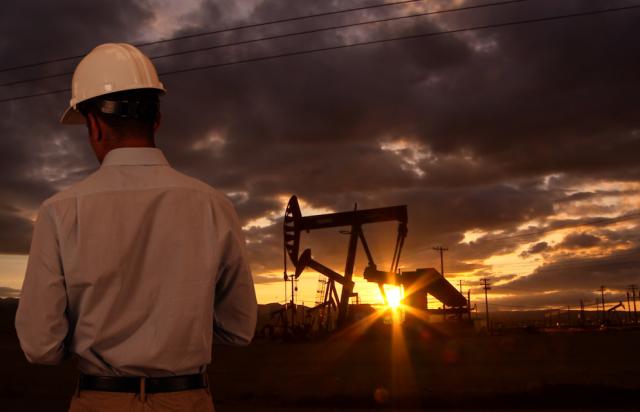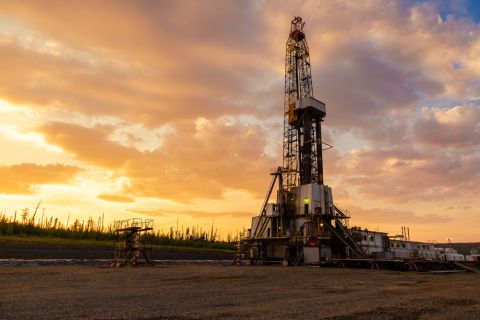
(Art provided by Projetech Inc.)
Oil and gas are commodities. The industry is cyclical and filled with volatility. Companies operating in this space are looking for every efficiency and cost-saving measure to gain a competitive edge. The use of predictive maintenance technology is one of the ways oil and gas companies can reduce costs, drive efficiency and increase the life cycle of expensive equipment.

Downtime is like death to an oil and gas company’s bottom line. A scant 3.65 days of unscheduled downtime costs $5.037 million, according to research by Kimberlite. The average offshore oil and gas organization has roughly 27 days of unplanned downtime annually. One of the biggest reasons to employ predictive maintenance is to greatly reduce this downtime by catching equipment failures before they happen.
Predictive maintenance software is able to gather data from thermography, lubrication and electrical connections of equipment and forecast impending problems and failures. Using this information, along with other machine data pulled from an enterprise resource planning or asset management system and equipment history data, can allow an organization to see patterns and identify likely issues. By using data specific to a company’s equipment and how it is wearing, organizations can determine maintenance tasks based on individual equipment rather than general statistics.
The emergence of predictive maintenance is possible due to the development of the Internet of Things (IoT) and artificial intelligence (AI). IoT allows machines to communicate and digitize, automate and optimize processes that before were unconnected.
IoT technology is especially helpful to the oil and gas industry because oil is often found and mined in remote locations. Being able to monitor equipment regardless of its location allows an organization to manage issues that arise much quicker, reducing downtime and expensive equipment failures. As smarter devices evolve and oil and gas transportation and refining become more sophisticated, more and more machine-generated data can be generated and mined for information. The increase in machine-created data will allow AI to be used in predictive maintenance.
Many oil and gas operations are in dangerous, remote locations that aren’t ideal conditions for employee health and safety. According to the Centers for Disease Control (CDC), between January 2015 and January 2017, oil and gas extraction workers were involved in 602 incidents, 481 hospitalizations and 166 amputations. With IoT predictive maintenance, the remote monitoring of equipment can help reduce these numbers, allowing workers to know exactly where the problem is occurring and if the environment is safe to go in and fix it.
There are many software programs on the market, and they all work by tracking systems. The most important factor when choosing a program is that all the products an organization utilizes are compatible from a communication standpoint and operate on the same platform to facilitate information exchange.
It is often more expensive to move oil and gas than it is worth. Therefore for a company to generate profits, they must operate leaner and more efficiently than competitors. According to the U.S. Department of Energy, predictive maintenance saves 8% to 12% over preventative maintenance and upward of 40% over reactive maintenance. A study by McKinsey & Co. found that predictive maintenance could reduce machine downtime by 30% to 50% and increase the life of machines by 20% to 40%.
Predictive maintenance programs are supported by enterprise asset management systems. Cloud-based solutions and platforms, like Projetech’s Maximo as a Service, are a good fit for these applications. Having all the data in the cloud allows better communication and the ability for people to access the data from anywhere and with any device connected to the internet.
Technology has evolved all industries. By leveraging IoT and AI in predictive maintenance, oil and gas companies can reduce costs, increase efficiency and improve the safety of the work environment.
STEVE RICHMOND is the founder and CEO of Projetech Inc. Since launching Projetech in 1990, he has led, driven and grown the company to success as the largest IBM Maximo as a Service provider in the world.
Recommended Reading
Markman: I’d Like to Not Thank the Academy…
2024-02-28 - The oil industry does not come off well in the movies and the public can miss the big picture.
Aethon’s Far Western Haynesville: Three Wells, 17.5 Bcf and Still Roaring
2024-02-05 - Aethon’s wells show no signs of flatlining—and neither are Comstock Resources’ tests, one of which has already reached nearly 50% of its previously estimated EUR.
CEO Darren Woods: What’s Driving Permian M&A for Exxon, Other E&Ps
2024-03-18 - Since acquiring XTO for $36 billion in 2010, Exxon Mobil has gotten better at drilling unconventional shale plays. But it needed Pioneer’s high-quality acreage to keep running in the Permian Basin, CEO Darren Woods said at CERAWeek by S&P Global.
Uinta Basin's XCL Seeks FTC OK to Buy Altamont Energy
2024-03-07 - XCL Resources is seeking approval from the Federal Trade Commission to acquire fellow Utah producer Altamont Energy LLC.
Athabasca Oil, Cenovus Energy Close Deal Creating Duvernay Pureplay
2024-02-08 - Athabasca Oil and Cenovus Energy plan to ramp up production from about 2,000 boe/d to 6,000 boe/d by 2025.





